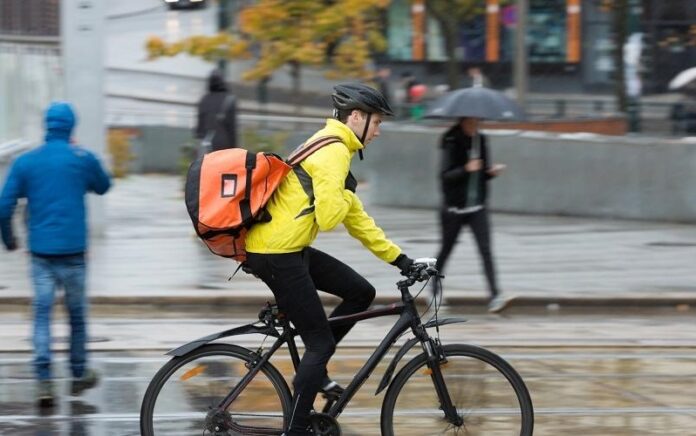Virginia’s stay-at-home order has residents homebound and schools closed through the rest of the school year. However, people are encouraged to engage in outdoor activities for exercise, as long as proper social distancing is practiced.
This new reality finds children, parents and families dusting off bicycles and lacing up walking shoes to head outside for fresh air and exercise. It is important for all bicyclists and pedestrians to review proper safety tips and take necessary precautions to make these outdoor activities as safe as possible.
According to the DMV, there were 633 crashes involving bicyclists in Virginia in 2018. Nationally, there were 857 bicyclists killed in motor vehicle crashes in 2018, a more than six percent increase from the previous year, according to the National Highway Traffic Safety Administration (NHTSA).
During the Covid-19 outbreak with Virginia’s stay-at-home order in place since March 30th, Virginia has seen a huge drop in traffic and crashes. According to preliminary data from DMV, between March 25th and April 24th, Virginia saw 2,302 crashes, down from 10,462 a year earlier, a 78% drop.
Of those crashes, 31 involved bikes, compared to 45 in 2019. That’s down only 31%. According to reports, a teen was seriously hurt in Waynesboro after slamming into the back of an enclosed trailer being pulled by a pickup truck on March 20th. Several witnesses reported the 13 year-old did not stop for a stop sign, seconds before slamming into the trailer. He was airlifted to the hospital for treatment.
“Spring is here and bicycles are back, more than ever, especially with schools closed and Virginia residents under stay at home orders,” says Morgan Dean, a senior specialist in Public and Government Affairs for AAA Mid-Atlantic. “Outdoor exercise is allowed, making bike riding an option for many while practicing proper social distancing. Because there are fewer cars on the roads, bikers may feel a false sense of security. AAA urges all bicyclists to review Virginia bike laws and basic safety tips to avoid injury.”
AAA Bike Safety Reminders
- Always wear a helmet. Wearing a properly fitted helmet can reduce your risk of serious injury by as much as 85%. For guidance on fitting a helmet, see the National Highway Traffic Safety Administration’s Fitting Your Bike Helmet.
- Maintain your bike. Before riding, inflate tires properly and check that the brakes work and that your chain is not showing serious signs of wear.
- Make yourself visible. No matter the time of day, make yourself visible to others. Wear neon, fluorescent or other bright colors when riding, to be most easily seen. Wear something that reflects light, such as reflective tape or markings, or flashing lights. Remember, just because you can see a driver doesn’t mean the driver can see you.
- Look for hazards such as potholes, broken glass, gravel, puddles, leaves, and dogs. All these hazards can cause a crash.
- Obey traffic laws. A bicycle is a vehicle and you’re the driver. When you ride in the street, obey all traffic signs, signals, and lane markings.
- Use verbal and non-verbal communication. This includes eye contact with drivers, turn signals, pointing to road hazards for bicyclists behind you, and stating “passing on your left,” or “on your left.” Your bike should be equipped with a bell or horn to alert other cyclists, pedestrians and motorists of your presence.
- Be predictable. Ride in a straight line, not in and out of cars. Signal your moves to others.
- Look before turning. When turning left or right, always look behind you for a break in traffic, and then signal before making the turn. Watch for left- or right-turning traffic.
- Children should not ride alone. Children younger than 10 years old are not able to make necessary safely decisions and should ride with an adult. Utilize safer routes such as sidewalks when available.
Everyone is a pedestrian at some point in the day. Unfortunately pedestrian fatalities remain high. In 2018, there were 6,283 pedestrians killed in traffic crashes, a three percent increase from the previous year and the most since 1990, according to NHTSA.
“As more people take to the sidewalks and streets, we are all responsible for making safety a priority,” noted Dean. “Pedestrians and drivers alike should remain alert and be aware of each other’s movements on the roadways.”
AAA Pedestrian Safety Reminders
- Walk on sidewalks whenever possible.
- If no sidewalk is available, you must walk on the left side of the road, facing traffic (Pennsylvania law).
- Cross at crosswalks. Keep to the right in the crosswalk.
- Look both ways before crossing the street.
- At signalized intersections, cross only on the proper signal.
- Avoid crossing the street between parked cars.
- Watch for cars. Be sure that the way is clear before you start crossing. Continue looking and checking while crossing.
- Never assume a driver sees you. Make eye contact with drivers as they approach you to make sure you are seen.
- Motorists must yield to pedestrians crossing the street at marked and unmarked intersections BUT the pedestrian must either be within the crosswalk or affirmatively indicate an intent to cross (Pennsylvania law).
- Wear or carry retro-reflective material or carry a flashlight at night to help drivers see you.
- Avoid distractions. Limit phone use, loud music, and other distractions while walking.
BIKE SAFETY VIDEO: AAA Bike Safety – What it Means to be a “Roll” Model
PEDESTRIAN SAFETY VIDEO: AAA Pedestrian Safety
